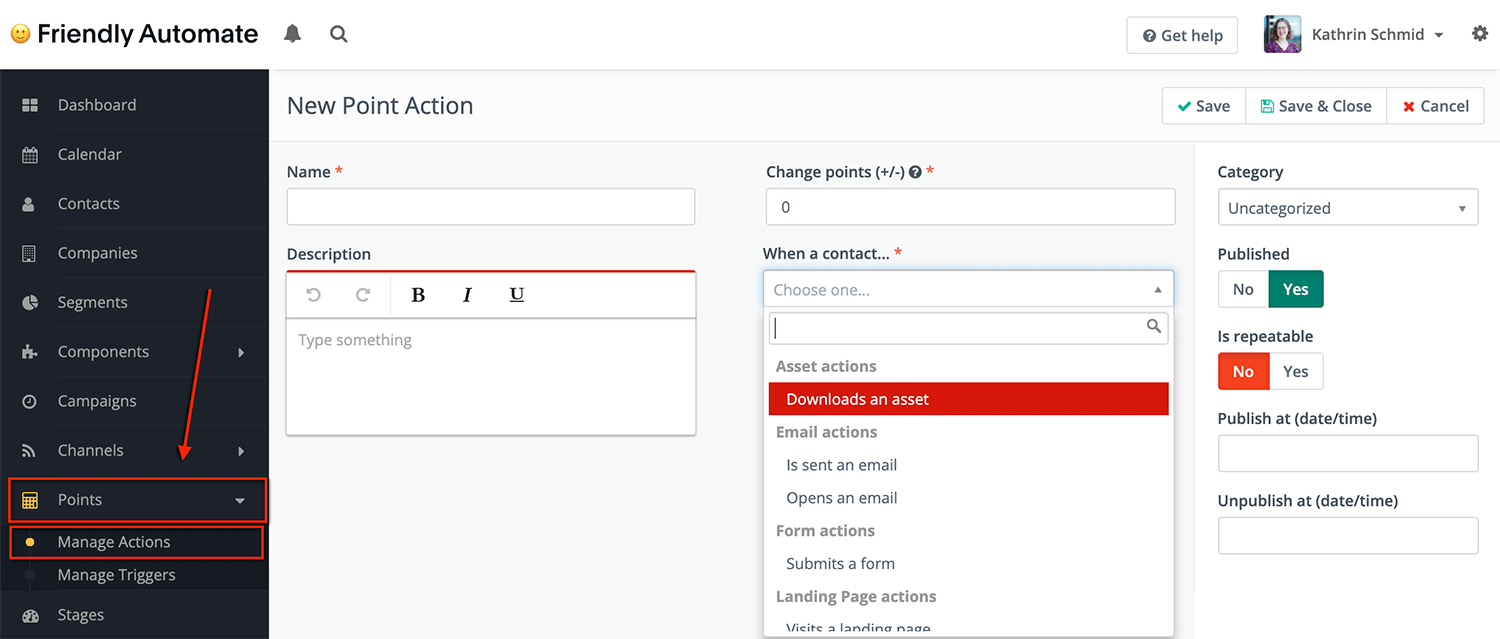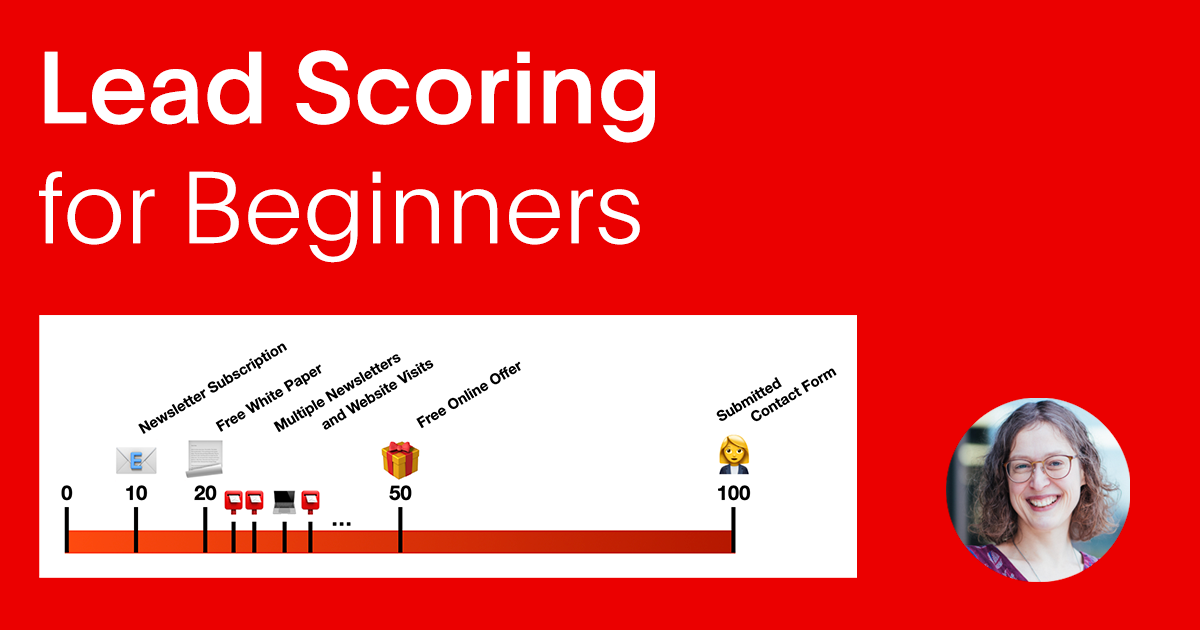Lead scoring is an important way to get feedback on the rising or falling interest of your contacts and respond to it.
Thanks to lead scoring, you can see in real time which are your most valuable leads. This gives your sales department the opportunity to focus on the contacts that have the highest probability of closing a deal. Or you can make special offers to your VIP contacts – fully automated.
Contents
Introduction
What is lead scoring? Simply put, you give your contacts points when they interact with your offering, and subtract points when they stop interacting for an extended period of time. The latter is also important and often neglected.

You’ll find a lot of articles online about the importance of developing a custom lead scoring model tailored to your marketing strategy.
You are advised to define
- what factors turn your visitors into potential customers
- what process your specific leads will take in their customer journey
- how many points you want to give them for each action along the way
- at which score threshold your lead should be considered a qualified sales-ready lead
- and in turn, for what behaviors you want to deduct points.
This advice is really good and you should definitely keep it in mind.
The problem is that with this general advice, it’s really hard to get started with actual lead scoring.
So we’re going to present you with a simple model that you can use to get started right away. It is based on the helpful suggestions of a market companion and gives you all the numbers you need to get started. From here, you can gradually adapt the model to the needs of your company.
Step 1: Set a threshold for sales-ready leads
Your leads will accumulate points until they reach a certain point value. At a certain threshold, they’re considered sales-ready leads: they have interacted with your brand enough that they’re likely to make a purchase soon. These are the leads your sales team should focus on.

For the simple lead scoring model that we are recommending for you to start with, we will set a threshold of 100 points.
Step 2: Award points for specific actions
Now you can assign points for specific interactions. There are actions that can give points to each contact only once, and actions that can give points to the contact any number of times. For example, a one-time action can be a newsletter subscription, a repeatable action can be a visit to the website.
| Repeatable Actions | Points |
|---|---|
| open an email | 1 |
| click on an email | 2 |
| website visit | 3 |
| download free offer | 10 |
| One-Time Actions | Points |
|---|---|
| newsletter subscription | 10 |
| submit contact form | 50 |
| register for webinar or consultation | 75 |
| attend webinar or consultation | 100 |
Of course, it’s up to you to decide which actions give your contacts one-time points and which ones are repeatable, and also how much the different activities of your contacts are worth to you.
This simple model can help you rank the point value of your custom actions. Think about how many points you want to assign to each action so that 100 points reliably reflects a sales-ready lead.
Based on this simple model, you can probably think of other actions that are important for your specific business and that you want to award points to your leads for.
Step 3: Deduct points for inactivity and negative actions
For certain actions you can also deduct points from your contacts, in other words, give them negative points. For example, you should deduct points from your leads if they unsubscribe from your newsletter, if they haven’t interacted for a long time, or perhaps if they have looked at your jobs page (implying that they are interested in your company as an employee, not as a customer).
| Inactivity | Points |
|---|---|
| inactive for 30 days | -15 |
| inactive for 60 days | -30 |
| inactive for 90 days | -45 |
| Negative Aktionen | Points |
|---|---|
| unsubscribe from newsletter | -10 |
| visit job page | -10 |
The period of inactivity from which you start deducting points should reflect the length of your sales cycle. If your sales cycle usually lasts 6 months, you should start deducting points only after 6 months.
Step 4: Put your lead scoring model into practice
Of course, the implementation of the scoring depends on the software you use for marketing automation.
In Friendly Automate, you have two ways to assign points to your contacts.
On the one hand, you can assign general points, that is, whenever a contact does a certain action. To set up these point actions, click on “Points” on the left side in Friendly Automate, then “Manage actions”, and then click on “New” in the upper right corner. Now you can create a point action:

On the other hand, you can award points within campaigns, for example for clicks on specific emails. You will find some examples in upcoming our campaign tutorial.
Step 5: Evaluate your lead scoring model
In the contacts overview in Friendly Automate (and in the corresponding function in other software) you can see how the scores of your contacts develop.
Regularly monitor whether your lead scoring model is delivering reliable results and adjust it if necessary.
This way, you always have an overview of which leads are particularly loyal to your offer and your brand, and can use this valuable information for your sales and marketing.
Friendly in your inbox? Sign up for our newsletter.


